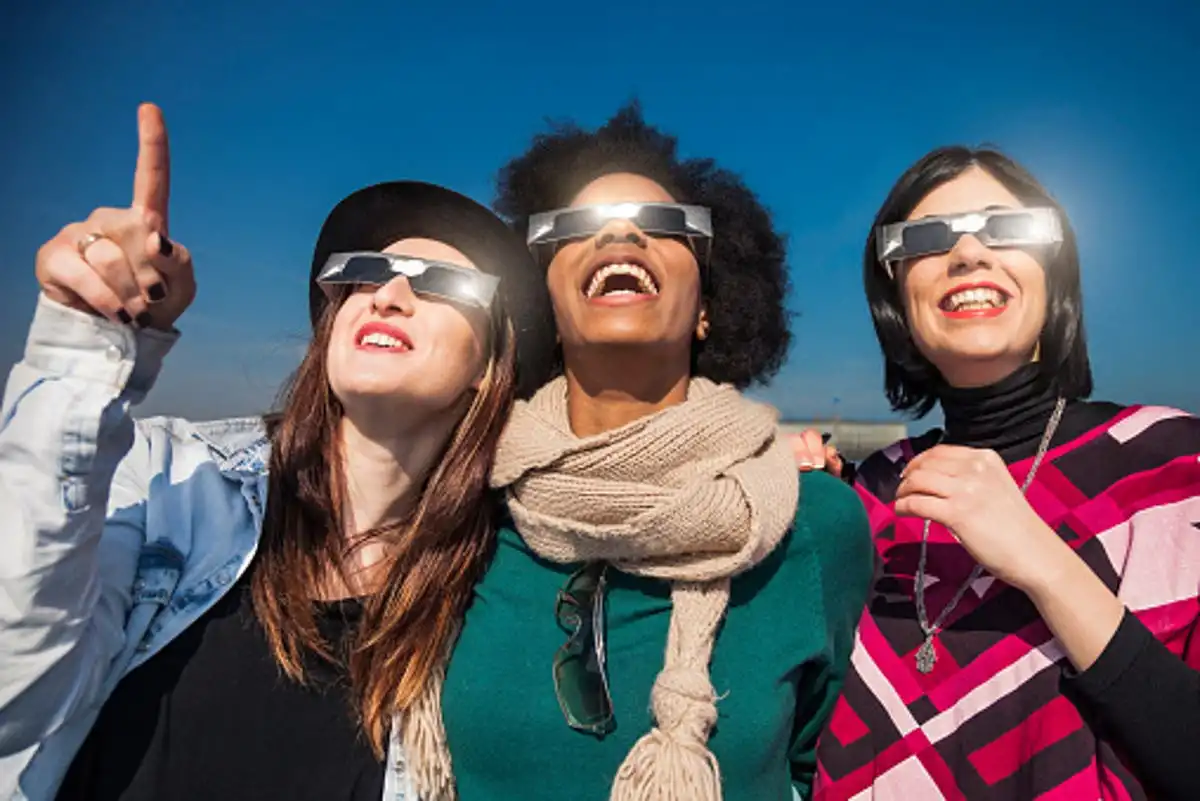DIY solar eclipse glasses: Make and buy them
"Total solar eclipse to darken sky in US, Mexico, Canada on 8 April. Proper eye protection crucial for safe viewing."
On Monday, 8 April, a rare and spectacular total solar eclipse will be visible across the United States, Mexico, and Canada. This celestial event occurs when the moon passes directly between the sun and Earth, casting a shadow over the land and darkening the sky in the middle of the day. However, in order to safely view this awe-inspiring phenomenon, it is crucial to take proper precautions.
The eclipse progresses through various phases as the moon slowly moves in front of the sun. This initial phase, known as the partial phase, requires viewers to wear protective eyewear that meets the ISO 12312-2 international standard. Nasa strongly advises against looking directly at the sun through a camera lens, binoculars, or telescope without a special solar filter, as this can result in severe eye injury.
Exposure to the intense light of the sun during an eclipse can cause a condition known as "eclipse blindness" or solar retinopathy. Symptoms range from mild discomfort such as watery eyes and headaches to more serious issues like blurry vision, blind spots, and even blindness. If you suspect that you have experienced a retinal burn, it is essential to seek immediate medical attention from an ophthalmologist or optometrist.
To safely view the eclipse without risking eye damage, Nasa recommends using approved eclipse glasses or filters that are specifically designed to block out harmful rays. Additionally, individuals can create a simple pinhole projector using household items to project an image of the eclipse onto a surface, allowing for safe viewing without direct exposure to the sun.
During the brief period of totality when the moon completely covers the sun, it is safe to view the eclipse without protective eyewear. However, once any light begins to peek through again, it is important to resume using filters or coverings to prevent eye damage. The duration of totality varies depending on your location, with reports of up to four minutes and 27 seconds in certain areas.
For those who prefer not to make their own pinhole projector, retailers such as Warby Parker and libraries across the country are offering free ISO-certified eclipse glasses to the public. Various businesses, including Jeni's ice cream and Sonic, are also celebrating the eclipse with special promotions that include complimentary eclipse glasses with purchases of select items.
In conclusion, the total solar eclipse on 8 April promises to be a once-in-a-lifetime event that should be enjoyed safely and responsibly. By following the recommended guidelines for viewing and protecting your eyes, you can witness this extraordinary natural phenomenon without risking harm to your vision. Remember to take advantage of the free eclipse glasses available from retailers and libraries, or consider making your own pinhole projector for a unique viewing experience.











Comments on DIY solar eclipse glasses: Make and buy them